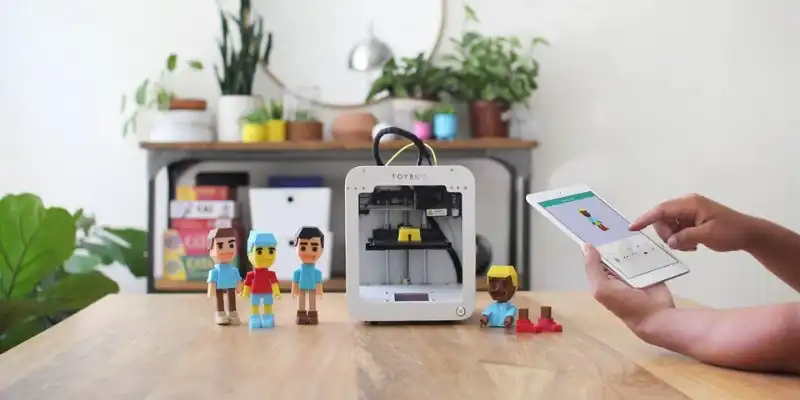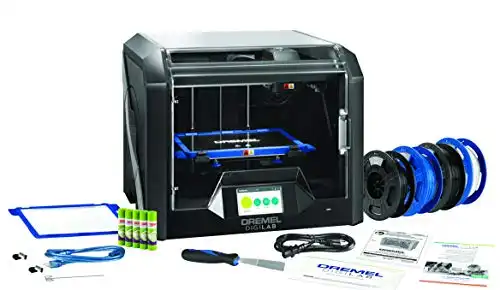
Increasingly, schools around the world are turning to more creative ways of teaching students, away from boring lesson plans and towards learning through play. The world is changing, and education must change with it. To prepare children for a career in engineering or 3D software design, schools are looking for the best 3D printers for kids for education.
As a result, a number of 3D printers have been designed specifically with the classroom in mind. Therefore, we created our list of seven FDM 3D printers we feel are best suited for teaching children — from elementary to high school and older — how 3D printing works.
|
|
|
|
$299-349
|
$2,199.00 ($2.45 / oz)
|
|
|
Best 3D Printers For Schools & STEM Education – Full Round-Up
- Toybox 3D Printer: Great for younger kids to learn 3D printing
- Makerbot Sketch Solution: Specialized 3D Printer For Education
- MakerBot Replicator+ Educators Edition
- Flashforge Creator Pro 2
- Dremel Digilab 3D40 EDU: Dremel’s Specialized 3D Printer For Education
- Dremel 3D45 EDU
- Ultimaker S3: Simply the best
- Monoprice Select Mini V2: Very Affordable 3D Printer For Classrooms
3DSourced is reader-supported. When you buy through links on our site, we may earn an affiliate commission. Learn more
What makes a good educational 3D printer?
Ease of use, by far, especially with younger students. If they can’t operate the printer, they won’t be inspired or learn anything, so simplicity is the number one priority. 3D printers for younger classes must be safer and simpler, whereas more astute students, such as engineering students, will be safer and more comfortable around more complex printers.
Moreover, reliability. Teachers can’t teach while fixing broken printers — any educational 3D printer must work consistently.
Lastly, ideally a 3D printer for schools should come with lesson plans, class projects or interactive exercises. 3D printer companies such as Makerbot, Tinkerine and Dremel 3D printers have focused on developing 3D printers as educational tools, offering come with these full lesson plans, tailored by age group.
Since good education 3D printers are also suited for children to play with out of school, we picked the following printers for both criteria: the best 3D printers for schools and STEM education.
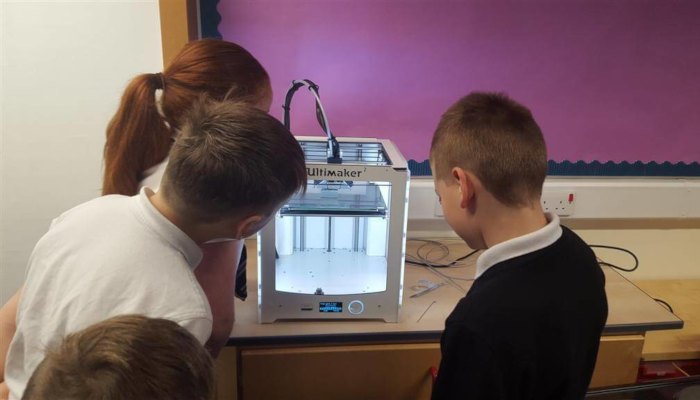
Advantages of 3D printers in schools:
- Makes learning interactive and active: unlike studying a textbook or watching a lecture, with 3D printing students interact with the machines and get involved with printing.
- Encourages real world understanding: much of what is taught in schools is theoretical, rather than seeing the results and effects in front of you. Having a real 3D printer create real parts is better than abstract theories, and will help develop a student’s engineering skills and spatial intelligence far better.
- More interesting: the tech is cool, and if students are interested, they’ll learn faster.
The Best 3D Printers For Schools & Education
Toybox 3D Printer — great for younger kids to learn 3D printing
- Price: Starting at $300 — Available at Toybox store here
- Build Volume: 70 x 80 x 90 mm
- Material Compatibility: PLA
- Minimum layer height: 200 microns
- Print Speed: 60 mm/s
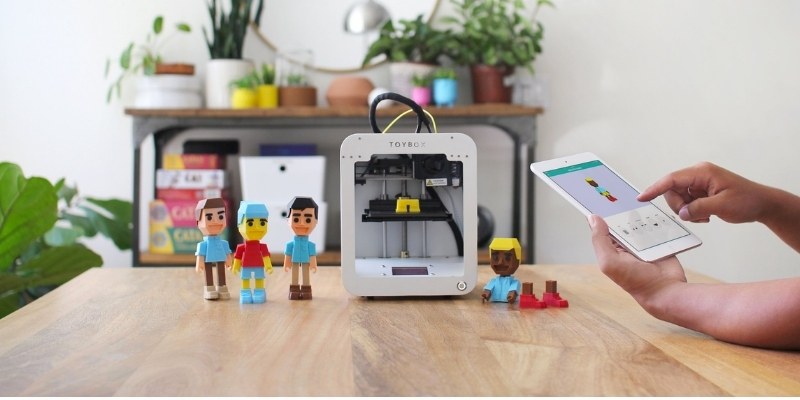
Pros
Designed first and foremost for children
Affordable price tag
Biodegradable, non-toxic PLA
Out-of-the-box, one-touch user-friendly printing
Access to free 2000+ toy print catalog
Cons
Small print area
Limited scope for practical learning applications
Toybox strikes gold with a 3D printer designed exclusively for children, promoting self-guided creativity and nurturing interest in technology. The Toybox 3D printer can also serve older students or adult learners eager to avoid the usually steep 3D printing learning curve before transitioning to a meatier education-focused printer.
A gentle, inexpensive entry point into the world of 3D printing, the Toybox’s accessible, user-friendly design is tailored through and through to young first-timers. Touch screen functionality, Wi-Fi connectivity, a small footprint, compatibility with non-toxic, biodegradable ‘3D printer food’ PLA, and support for iOS/Android devices and web browsers all work to empower young learners with the tools to experience 3D printing simply.
When we tested the Toybox, we were super impressed with the accessibility, the ease in starting to print almost immediately, and how easy it was to switch between filaments.
Read more: our Toybox 3D printer review
The Toybox printer also comes sided by the Creator Space, an all-in-one app, library, and customization suite. Child-friendly, the app houses everything needed to print from a 2000-strong catalog of customizable toys. It also gives children everything to print their own creations or complete a compelling school project.
With such a focus on simplicity and one-touch printing, the Toybox is very limited in its applications, marking it very much a 3D printer for classroom use at lower-grade levels. Beyond toys, the Toybox lacks the necessary features and versatility for more advanced and practical STEM learning applications.
Makerbot Sketch Solution — Specialized 3D Printer For Education
- Company based: USA
- Price: $1,799 for the whole package (2 3D printers) — Available on your local Amazon store here
- Print volume: 150 x 150 x 150 mm
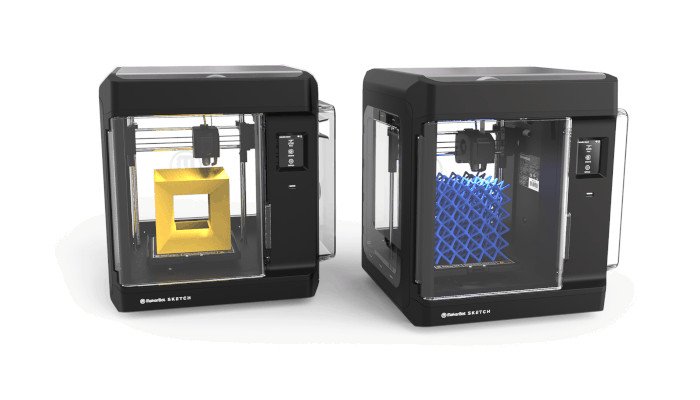
There are over 7,000 Makerbot printers installed in schools across North America, with Makerbot positioning themselves as the go-to educational 3D printing brand. Their latest education 3D printing solution, the Sketch, builds on this focus on helping schools teach effectively.
Makerbot offer a detailed Educators Guidebook for how to over 600 free lesson plans Makerbot host, as well as a certification program for students who want to stand out as a STEM leader. They offer the only comprehensive ISTE-certified 10-hour 3D printing training, and have an organized cloud-based file management system that integrates easily with TinkerCAD or Fusion 360 3D CAD software to their printers.
For the price, you get far more than just two Makerbot Sketch 3D printers. You also get 6 classroom-safe 3D printer filament PLA spools, 4 build plates, 2 spatulas for separating prints from the build plate, 2 replacement nozzles, 2 teacher certification seats, 10 student certification seats, and Makerbot Cloud with print queuing free for a year. Makerbot have focused on creating a full solution for STEM education, making it as simple as possible to order everything you need to teach kids about size, shape, and principles of engineering and form.
MakerBot Replicator+ Educators Edition
- Price: Check on Amazon here
- Build Volume: 295 x 195 x 165 mm
- Material Compatibility: MakerBot PLA, MakerBot Tough PLA
- Minimum layer height: 100 microns
- Print Speed: 175 mm/s
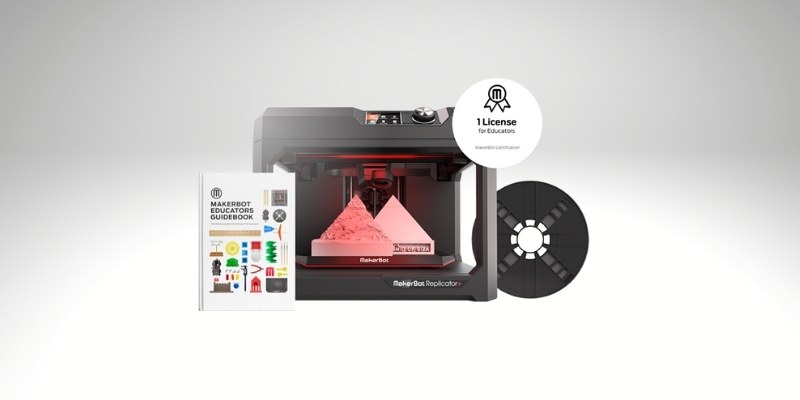
Pros
STEM lesson plan
Easy classroom management
Simple setup and easy printing
Excellent software suite
Cons
Pricey
PLA-only, which can limit potential learning applications
Another strong contender for 3D printers for schools and a favorite among educators, the MakerBot Replicator+ Educators Edition is a robust ecosystem printer housing top-end printing and safety features.
A set-and-forget quality courses through every aspect of the MakerBot Replicator+ Educators Edition. It arrives fully assembled, sided by automatic bed leveling, Wi-Fi connectivity for remote monitoring and printing, and an easily navigable LCD.
The MakerBot Replicator+ Educators Edition blends seamlessly into the classroom environment due to an excellent software suite, including MakerBot Cloud, TinkerCAD compatibility, and the intuitive MakerBot Print phone, desktop, and browser app. Safety is also well covered with an onboard camera, removable build plate, hands-off printing, and compatibility with MakerBot’s proprietary classroom-safe MakerBot PLA and MakerBot Tough PLA.
Educators will also find the included MakerBot Educators Guidebook. There’s also a library of classroom-ready projects and 600+ lessons, and MakerBot’s ISTE-certified program and educators license. The latter is a priceless resource for getting to grips with how the Replicator+ works and to foster deeper learning among students.
Compared to the MakerBot Sketch, another excellent pick for the best 3D printer for students, the MakerBot Replicator+ Educators Edition has a larger build volume, serving educators looking for more ambitious projects or multiple-part printing. The MakerBot Sketch is arguably a safer option due to the enclosed chamber design and particulate filter. It also has a few choice features the Replicator+ lacks, such as touch screen control and a heated build plate.
The MakerBot Replicator+ Educators Edition levies a considerable cost, and the strict limitation to PLA won’t suit those looking to extend their teaching to other material types. The machine’s filament compatibility stops at MakerBot’s spools, which eliminates potentially cheaper third-party filament.
Flashforge Creator Pro 2
- Price: Available at Flashforge Official store here / Check price on Amazon here
- Build Volume: 200 x 148 x 150 mm
- Material Compatibility: PLA, Pearl PLA, ABS, ABS Pro, PVA, HIPS
- Minimum layer height: 100 microns
- Print Speed: 30-100 mm/s
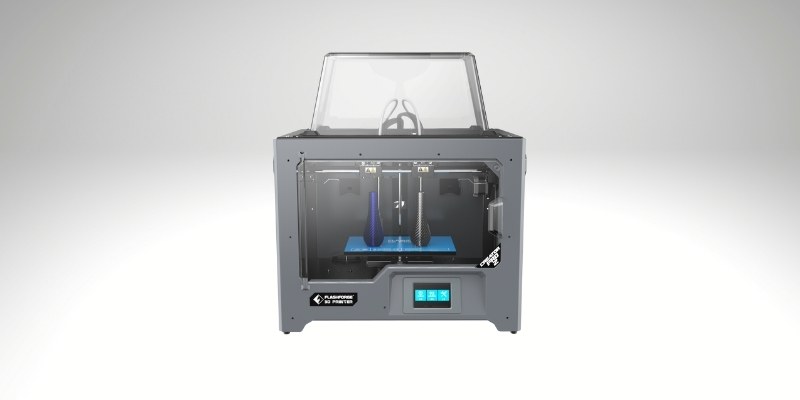
Pros
Independent dual extruder system suited to more complex, multi-material printing
Broad learning applications thanks to material compatibility
Safety features
Won’t bleed a school’s STEM budget dry
Cons
Tied to FlashPrint slicer
The Flashforge Creator Pro 2 lines up alongside the best 3D printers for schools. It offers a cost-effective, enclosed printer fit to handle a broad range of materials. Teachers will find the Flashforge Creator Pro 2 an adaptable classroom 3D printer. Especially those teaching advanced design and technology along with their various applications.
While most school-geared 3D printers tend to stick to easy and predictable PLA, the Flashforge Creator Pro 2 offers far more possibilities. This is chiefly down to providing the perfect environment for more heat-sensitive materials such as ABS while still confidently printing with PLA, PVA, and HIPS.
The independent dual extruder is also a boon for educators looking to teach more complex 3D printing techniques that employ two different filament types in the same print: two-color parts, support structures for a particularly complex model with lots of overhangs, or printing multiple student-designed parts at the same time.
The Flashforge Creator Pro 2 scores points for ease of use, too. It arrives fully assembled and ready to print, negating the need for time-sapping setup and tinkering to get the best results. Although the Flashforge Creator Pro 2 lacks learning aids and lesson plans like many other classroom-ready 3D printers, its simplicity won’t pose any issues for educators and students.
The only negative shrouding an otherwise stellar offering is that Flashforge tethers the printer to its FlashPrint slicer. It’s a competent slicer with great functionality, but for those wanting more advanced features and the freedom of an open-source toolkit, the limits are there. We recommend Cura, the go-to third-party pick among makers of all experience levels.
Dremel Digilab 3D40 EDU — Dremel’s Specialized 3D Printer For Education
- Company based: USA
- Price: $1,699 with all filament materials, lesson plans — Available on your local Amazon site here
- Build volume: 255 x 155 x 170 mm
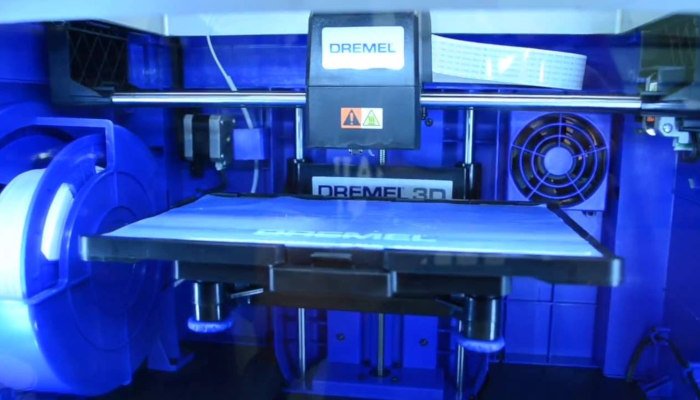
No longer just a tool manufacturer, American manufacturer Dremel have moved into 3D printing with their Dremel Digilabs range, with the 3D40 EDU tailored towards educating kids in 3D printing.
The printer comes with a lesson plan, designed in line with US educational standards and accepted in all US states. These lessons teach problem-solving and teamwork with 3D printing, helping students gain manufacturing skills that will prove key in the future. Moreover, the course counts for 4 hours of PD credit — while you learn about 3D printing!
Dremel 3D45 EDU
- Price: Check price on Amazon here / Available on Matterhackers here / Available on Dynamism here
- Build Volume: 255 x 153 x 170 mm
- Material Compatibility: PLA, PETG, Eco-ABS, Nylon
- Layer height: 50 microns
- Print Speed: 150 mm/s
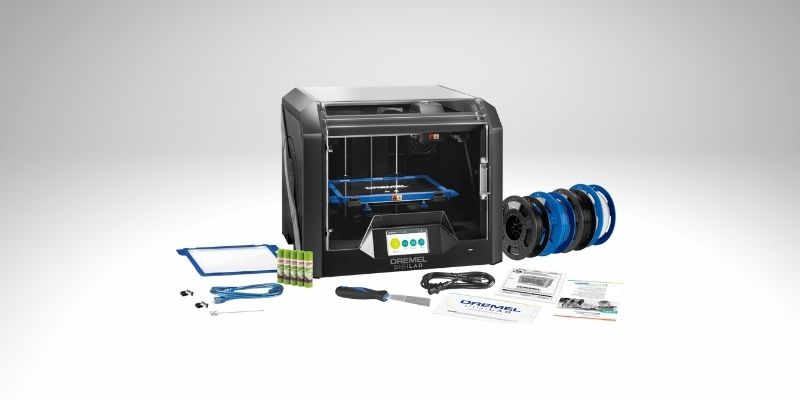
Pros
Minimal setup and easy to use features
Ships with great learning resources
Compatible with more material types than most education-focused printers
Safe for a dynamic and unpredictable class room setting
Cons
Expensive for a school on a strained budget
The Dremel 3D45 EDU is another 3D printer made for education from the toolmakers at Dremel. It provides a complete, easy-to-use, minimal setup 3D printing experience, perfect for learners.
Simplicity is the theme here. Dremel has gone to lengths to make using the Dremel 3D45 as effortless as possible. It boasts automatic bed leveling, a trove of connectivity options including Wi-Fi and cloud networking, a sleek touchscreen interface, and ships fully assembled. Combined these types of features make setting up and using the print far easier, so both teachers and learners can get hands right off the bat.
The Dremel 3D45 EDU covers all the safety bases with a HEPA carbon air filter, a fully enclosed chamber, a filament holder encased within the printer’s shell, and even a handy, in-built HD camera for remote print progress monitoring. The EDU kit also arrives with extra filament spools, glue sticks, and a backup build plate.
Aside from top-shelf specifications, the Dremel 3D45 EDU ships ready to teach with lesson plans aplenty suitable for 3rd to 12th grades and even a self-paced training program for teachers.
The program equips educators with all the hardware and software knowledge, from design to print, to confidently use and teach with the Dremel 3D45 EDU, rounded-off by Dremel-stamped instructor certification.
The broader material compatibility sets the Dremel 3D45 EDU from its 3D40 EDU sibling. Instead of simply playing nice with standard PLA, Dremel 3D45 EDU gives educators and students the possibility to experiment with PETG, Eco-ABS, and Nylon. Under the hood, the two boast the same high-quality features, except for a direct, all-metal extruder capable of temperatures up to 280-degrees centigrade and a heated bed found on the Dremel 3D45 EDU.
Ultimaker S3 — Simply the best
- Price: $3,850 — Available at Dynamism here / Matterhackers here
- Print volume: 230 x 190 x 200 mm
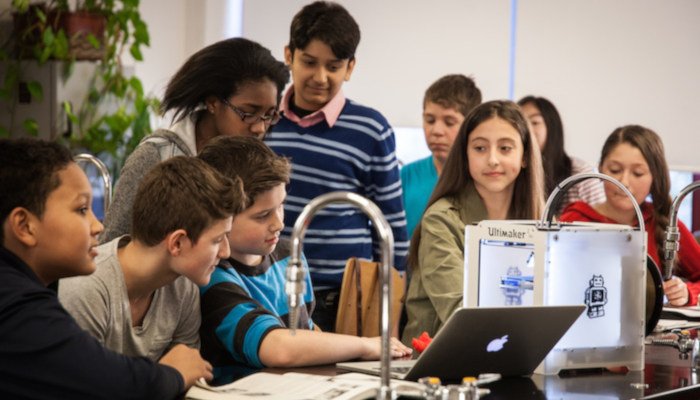
Any knowledgeable maker will know that the Ultimaker S3 is one of the best FDM 3D printers around. It features industrial-level quality, reliability — and most importantly for 3D printing in schools, simplicity. It’s also open source, an advantage to any inquisitive and advanced engineering students who want to try modifying any parts of it.
Though on the pricier side — especially if class sizes exceed 20-30 students — the Ultimaker 3’s ease of use and print monitoring (clever auto leveling features, remote printing via phone) make it a fantastic option for 3D printing in schools. Simply because things rarely go wrong since the printer is so reliable, the Ultimaker 3 is ideal for use in teaching children about 3D printing.
Monoprice Select Mini V2 — Very Affordable 3D Printer For Classrooms
- Company based: USA
- Price: $199 — Available on your local Amazon store here
- Build volume: 120 x 120 x 120 mm
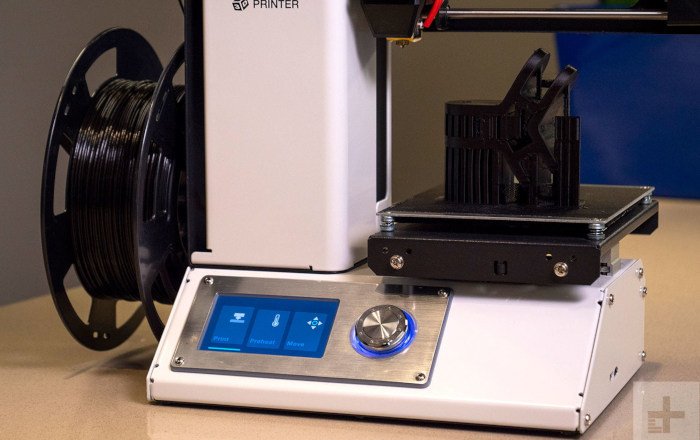
Though not positioned as a 3D printer for education, the Select Mini V2 is a cheap 3D printer and simple enough to use that every student could have their own, for the same price as one or two more expensive printers.
It’s basic enough to be easily usable by students, and cheap enough that if anything goes wrong, it isn’t a disaster. Moreover, it’s open plan design lets students see the printing done up close, which isn’t always the case with more closed off printers. It doesn’t come with any lesson plans or education guides, but the Monoprice Select Mini V2 definitely has applications for teaching 3D printing in schools.
Buyer’s Guide – What To Consider For 3D Printers in Schools
Ease of Use
Given that inexperience and keen curiosity come hand in hand with educational settings, we recommend 3D printers that take extra steps to streamline and simplify the process.
Features such as automatic bed leveling, Wi-Fi connectivity, and touchscreen controls take the more technical and tinkering aspects out of the equation.
With such features, the printer should be accessible not just to younger learners, but also less experienced teachers weaving 3D printing into their lessons for the first time.
Assembly
For the sake of simplicity and setting up a print station as fast as possible, we recommend opting for 3D printers that ship pre-assembled. To help, most printers targeting schools and education arrive fully assembled as a standard feature.
Material and Filament Types
We recommend PLA as a good starting point. The material is biodegradable, non-toxic, and melts at a relatively low temperature compared to other filament types. PLA enhances the overall safety of learning about 3D printers while still offering a relatively sizable array of application and print options.
For more advanced users or for lessons covering specific topics that require a more versatile filament type, we recommend looking into a printer capable of printing with ABS and possibly others such as PVA and HIPS.
Safety
3D printer safety is a critical aspect to consider when working in a dynamic, sometimes hectic, classroom environment. We suggest paying particular heed to features such as enclosed chambers, air filtration systems, onboard cameras for hands-off monitoring, and easily removable build plates – all instrumental in keeping users safe.
Slicer Software
Slicing is an essential step in the 3D printing process. We recommend slicers that won’t overwhelm users with advanced options and sport a clean, intuitive UI.
Manufacturer-developed slicers offer complete integration and setting optimization with specific printers and, as such, are a good option. Otherwise, third-party slicers such as the ever-reliable Cura are excellent alternatives.
Tips For 3D Printing in Schools and Education
Head into class prepared. There is a veritable glut of resources out there, from lesson plans to projects covering a range of topics. Make use of these to help guide learning.
Use a simple, beginner-friendly design software. Doing so removes much of the complex facets of 3D printing, promoting quality learning and skill acquisition. TinkerCAD is a great starting point, although other options like 3D Builder, SketchUp Free, and Meshmixer exist.
Allow students to get hands-on with 3D printing. This doesn’t mean touching hot ends or tearing a printer apart. Instead, have them involved in the process, whether that’s choosing parts to print, adjusting slicer settings, picking colors, or piecing together printed parts. A sense of ownership over a project is priceless.
Fine-tune extrusion temperature and calibrate the bed beforehand. Doing so saves time and makes sure you don’t lose the fleeting attention of students while also reducing the chance of failed prints, errors, and on-the-fly troubleshooting.
How 3D Printing Helps In Education
Here are a handful of examples highlighting how 3D printing can liven up and transform learning.
Anatomy – Print out body parts, or why not an entire skeleton in parts to teach anatomy. Involve learners in the process.
Chemistry and Physics – 3D printed models of molecules and atoms are a powerful way to transform an oblique concept into something students can get their heads around in a physical sense.
Design, Engineering, Technology – Have students design and print functional parts for a contraption such as a bridge or a catapult.
History – Print models of historical figures, artifacts, ancient monuments, and why not a diorama of pivotal moments in history to inject some novelty into a lesson.
Geography – Craft a puzzle representing a particular country, continent, or the entire globe to help students learn geography and have fun in the process.
Mathematics – Print models to help young students beef up their counting skills in a tactile way. Or, why not print geometric shapes or even sudoku.
Ideas and Projects For 3D Printing in Schools and Education
Here, we’ve handpicked a few top ideas for 3D printing in schools that are sure to pique the interest of students.
- Puzzle Cube – Fine-tune those problem-solving skills with a classic cube puzzle.
- To-Scale T-Rex Skeleton – Resurrect a perfect rendition of the fiercest dinosaur of them all.
- 3D Pyramids of Giza – Bring Ancient Egypt to life.
- Molecules – Flexible and modular, these are excellent assets for chemistry classes.
- US States Puzzle – Help students nail the location and name of the 50 states.
- Helical Gear – Mathematics, engineering, and design combined.
You’ll find countless other projects suitable for schools and education at the following links:
Helpful Links for Educators and Schools:
Here we’ve gathered a list of valuable resources for educators who want to brush up on their 3D knowledge or newcomers looking to fast track their 3D printing journey and confidently impart knowledge to their classroom.
You’ll find user guides from the leading 3D printer manufacturers, links to online educational courses, certification programs, lessons plans, and other nuggets.
Learning and Education
- MakerBot Educators Guide
- MakerBot Educator Program
- Dremel Lesson Plans
- Dremel Professional Development Course
- Thingiverse Education Portal
- Tinkerine Classes
- Ultimaker Education
3D Printer User Guides
- MakerBot Replicator+
- Dremel 3D45
- Flashforge Creator Pro 2
- Ultimaker S3
- Monoprice Select Mini V2
- Robo E3
3D Printing Guides and Basics
- Which Is The Best 3D Slicer?
- The Complete History of 3D Printing: From 1980 to the Present Day
- How Much Does a 3D Printer Cost To Buy & Maintain?
- The Complete Best 3D Printer Filament Guide
Paying for a 3D Printer For Schools and Education
Although 3D printers can be a powerful tool to teach students about all manner of STEM-related topics and fields, the machines themselves don’t come cheap, nor does upkeep, sourcing a steady stream of filament, and having the accessories required for daily use. With most school budgets anemic at best, finding the funds to fuel a meaningful and valuable part of a student’s education poses considerable hurdles.
Fortunately, there’s help out there, starting with manufacturers. 3D printer companies such as FlashForge, Dremel, and MakerBot offer cut-price deals for educators and schools. You’ll often find these in the shape of reduced-priced filament and lower price tags for the printers themselves. We recommend contacting manufacturers directly to inquire about how they can help lower costs.
Furthermore, it’s worth looking further afield to charities, institutional grants, crowdfunding, and funding from foundations. Below, you’ll find a brief list of sites specialized in seeking out grant and funding opportunities for educators and schools in the US and around the world.
You may also be interested in:
- The 10 Best Cheap 3D Scanners
- Costing under $1,000, the 15 Best DIY 3D Printer Kits
- The 10 Best Large 3D printers
Education & School 3D Printing FAQs
What Is The Best 3D Printer For Primary Schools?
Toybox 3D Printer is used and designed for children and throws a good smattering of fun into the mix while still ticking off educational value. A low price tag helps, too, as does access to a vast library of toy prints.
What Is The Best 3D Printer For Middle Schools?
For middle school STEM classrooms, we recommend the MakerBot Replicator+ Educators Edition. Stacks of educational material, user-friendly use, and outstanding software should pair well with older, more inquisitive minds while still keeping things digestible and enjoyable.
What Is The Best 3D Printer For High Schools?
In our estimation, the Dremel 3D45 EDU and Flashforge Creator Pro 2 stand as two excellent picks for high schools, if only for material compatibility. Compatibility with ABS and other less common filament types allows for more experimentation and versatility in learning applications, touching on subjects as broad as history, chemistry, engineering, design, and physics.
